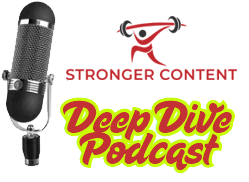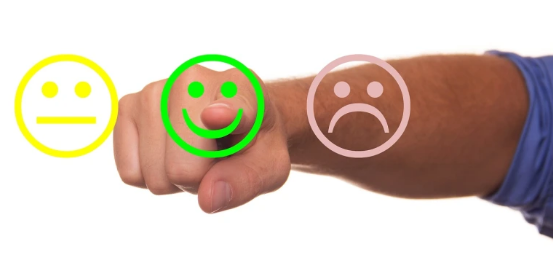MAY NOT BE REPRODUCED WITHOUT PERMISSION

How much work are you actually doing to build loyal customers?
In the most successful businesses, 65% of sales revenue comes from a loyal customer base. They buy more often and spend up to 67% more when they do buy. Loyal customers reduce your customer acquisition costs and increase your lifetime customer value. The most loyal customer tell others and help recruit new customers to your business.
If you’re not putting significant effort into building customer loyalty and doing frequent customer loyalty analysis, you’re missing the biggest opportunity to grow your profitability.
In this article, we’ll examine the key drivers that inspire loyalty, how to do a customer loyalty analysis that can drive revenue, and why these metrics are so important.
What Drives Customer Loyalty
A study American Marketing Association uncovered the four factors that drive customer loyalty:
- Dependability
Customers are more likely to be loyal when they believe you are reliable - Emotional Connection
When meaningful bonds are formed, customer loyalty metrics improve - Superior Products/Service
If customers believe you offer a superior product or service, they’re less likely to shop competitors - Social Media Presence
While a social media presence alone isn’t enough, how you use your social tools allow you to impact all of the above.
Even if you can check off each of these boxes right now, it takes a constant approach to build customer relationships to keep the momentum flowing. There are plenty of companies that did all these things right but then let attention – and performance – slip over time. That’s why customer loyalty analysis is so important to track that performance.
More than half (55%) of customers trust companies less than they used to. Building and maintain loyalty takes work. Measuring customer loyalty over time gives you a way to see whether your efforts are paying off.

Customer Loyalty Analysis
A customer loyalty analysis often begins with the Net Promoter Score (NPS). It measures the likelihood a customer will refer you to their friends. It’s a simple question that has powerful implications. Recommending a product to someone else puts your credibility on the line.
The Net Promoter Score (NPS)
NPS measures customers and divides them into three categories:
- Detractors
Customers that likely won’t buy from you again, won’t recommend you, and may encourage others not to buy from you. - Passives
These are satisfied customers, but not loyal ones. They aren’t happy enough with your products or services to recommend you to others and may shop elsewhere if they find a better deal. - Promoters
These are the customers you want. They’re loyal to your brand or product and tell others how great it is. They’re likely to buy again and remain loyal over time.
NPS = Promoters – Detractors
Loyalty program metrics, such as NPS, work best over time as it allows you to see whether you’re growing the number of promoters (loyalists).
NPS QUESTION EXAMPLE
On a scale of one to 10, how likely are you to recommend our business to a friend or colleague?
The Customer Satisfaction Score (CSAT)
The Customer Satisfaction Score (CSAT) is another common tool for customer loyalty analysis. It can be a simple as a single question.
CSAT QUESTION EXAMPLE
How satisfied were you with your experience today?
The reason it’s a powerful metric is it allows you to tie the score directly to a customer interaction to determine whether it was positive or negative. The higher the number, the more satisfied the customer was. This gives you valuable information that you can use to continue your loyalty recruitment measures. Conversely, it also surfaces problem areas that need improvement.
The Customer Loyalty Index
The Customer Loyalty Index (CLI) is another tool to track customer connections over time. It incorporates three key pieces to form a satisfaction and loyalty analysis:
- NPS
- Repurchasing
- Upselling
CLI QUESTION EXAMPLES
- How likely are you to recommend us to your friends or contacts?
- How likely are you to buy from us again?
- How likely are you to try one of our other products or services?
The CLI can give you an indication of how customers feel but keep in mind these are measures of intention and not actual purchases. That’s why another customer loyalty metric – Repeat Purchase Rate – is also important to track.
The Repeat Purchase Rate
The Repeat Purchase Rate (RPR) measures actual behavior and not just intention.
RPR = Number of Customer who Bought More Than Once / Total Number of Customers
Most businesses track this number over a one year period, although your business may differ depending on product lifespan and business models.
While repeat purchases don’t necessarily mean they are a loyal customer, it is a leading indicator. Studies also show that if you can get someone to make a purchase three times, they are 54% more likely to buy from you again. Repeat customers can more easily be converted to loyal customers.
Customer Lifetime Value (CLV)
While it’s may not be a direct measure of customer loyalty, customer lifetime value (CLV) is a key metric to demonstrate the impact of improving loyalty. By tracking customer purchases over time, you can project the value of a new customer to your business. This helps tell you how much you can expect to make from a customer if you can convert them to being loyal to you and helps formulate how much you should spend to build that loyalty.
CLV = Customer Value (CV) x Lifespan of Customers (T)
Loyalty often extends the lifespan of customers for your business and increases the customer value.
Customer Retention Rate (CRR)
You also want to take your customer retention rate (CRR). The key to sustainable growth in business is the ability to retain current customers while adding new customers each month. Otherwise, you’re just churning and wasting the opportunity to grow loyal customers.
CRR = (Number of customers at the end of the period – number of acquired customers during the period) / Number of customers at the beginning of the period
It’s especially important to measure the customer retention rate if you’re using loyalty programs to ensure you’re getting the results you need.
Loyalty Program Metrics
One effective way to increase customer loyalty is by rewarding your loyal customers. It might be a reward program, giving customers unexpected surprises, or offering exclusive discount offers, for example. There’s a cost tied to each strategy, so you want to make sure it’s worth the cost.
You’ll want to evaluate the success of your loyalty program by measuring:
- Member Value
Compared to the average CLV, does your loyalty program produce revenue that exceeds customers that are not in your loyalty program? - Share of Sales Transactions
Do loyalty members make up a growing share of your transactions? - Incremental Sales and Frequency
Do loyalty program members purchase more than average customers or more often than average customers? - Discount Impact
Many loyalty programs offer discounts to customers to purchase. You need to know the impact of these discounts. Are your discounts driving incremental sales or would customers buy from you anyway?
Loyalty Program ROI
These metrics can all add up to helping you determine the ROI on your loyalty programs. It can help you evaluate whether greater investment to recruit more members is worth it, whether discount programs are doing the job, and how much you should ultimately spend on recruitment.
It can also help you segment value groups to find your most valuable customers. Tracking their customer journey to become loyal customers can help uncover the path they took so you can duplicate it with other customers.
Tracking behaviors can also show you customers that are most at risk for attrition and then gauge the impact of retention strategies.
Customer Loyalty Metrics
Of course, it’s not just measuring these metrics that is important. It’s the satisfaction and loyalty analysis that’s crucial. It measures the impact of your actions and helps you identify places you need to improve.
With accurate, consistent, and measurable data, you can make better decisions about your business, including how to grow customer loyalty.
Measuring Customer Loyalty
If all of this seems like a lot of time and effort, we’ll leave you with a couple of final thoughts about why measuring customer loyalty is so important to your business.
Every customer that becomes loyal to your business is additive to your bottom line. It also helps recruit new customers. Every time someone makes a purchase, they’re more likely to provide a positive referral to a friend or colleague. After 4 purchases, they’re 74% more likely to provide a positive referral. After 10 purchases, they’re 129% more likely to do so versus a one-time purchaser.
Build loyal customers and they’ll help build your business by telling others how great you are.
Finally, consider this: a study by Bain & Company found that just a 5% increase in your retention rate can result in an improvement to a company’s profitability by between 25% and 95%.
Loyal customers are essential to growing your sustainability and profitability.

